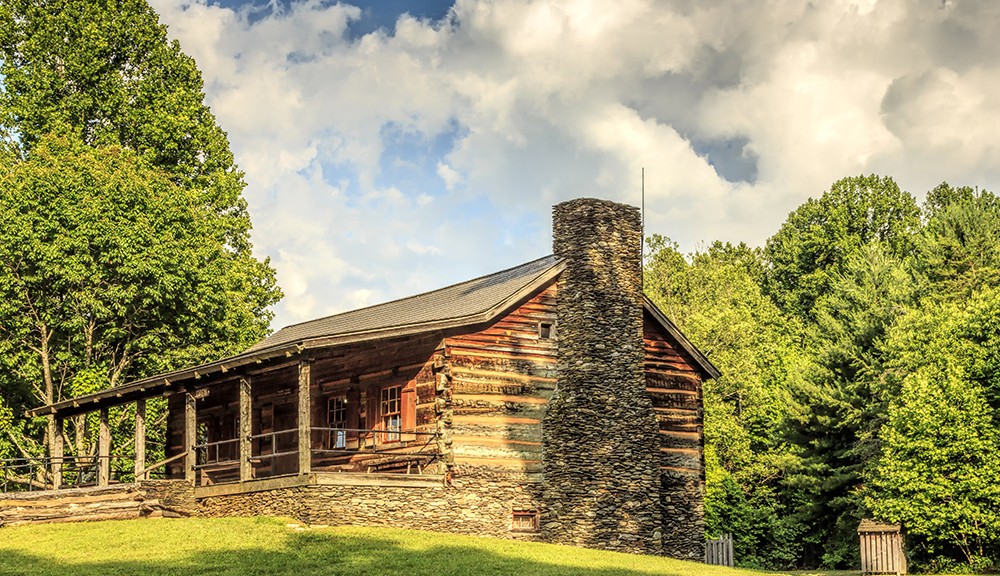
The Smoky Mountains are well-known for their majestic appeal, their flock of tourist attractions, their unique culture, and their country charm. What you might not realize about the Smokies is that they are also full of history. They have a rich cultural background that played a large part in shaping the area into what it is today, and you can find that history all over Gatlinburg, Pigeon Forge, and the surrounding areas.
William “Billy” Ogle is credited with having built the first settler structure in the Smoky Mountains in the mid 18th century. His descendant, Noah “Bud” Ogle, later built one of the Great Smoky Mountains National Park’s last remaining fully operational tub mills—and that’s just one of the must-see historic sites on our list.
Whether you’re a history buff or you’re just looking for a good way to stretch your legs in the great outdoors, these historic sites deserve to be visited the next time you come to the Smokies!
- John Cable’s Grist Mill—A favorite destination in the Great Smoky Mountains National Park, Cades Cove has an 11-mile, one-way loop that takes you on a tour of wildlife, beautiful mountains views, and rich history. Halfway around this loop, you will find the Cable Mill historic area, where you can find the impressive grist mill belonging to John Cable. Built in the early 1870s, Cable’s mill is still functional, and corn meal can be purchased at the Cades Cove Visitor Center seasonally.
- John Oliver’s Cabin—Also located in Cades Cove is the John Oliver Cabin, which was built in the early 1820s by John and Lucretia Oliver, the first permanent white settlers of Cades Cove. They lived in their cabin until the Great Smoky Mountains National Park was established in 1934. Today, the park manages and maintains their land and homestead, preserving its look from the days when the Olivers were still living in it.
- Little Cataloochee Church—Located two miles in on the Little Cataloochee Trail, this primitive white painted church is nestled in the Cataloochee Valley, surrounded by the 6,000-foot peaks of the Smoky Mountains. The Little Cataloochee Church was built in 1889 and served the roughly 1,200 people who lived in the valley at the time. The church was a place for community gatherings, and the fenced, well-maintained cemetery close to the church became the final resting place for many of its members. Each year on Memorial Day, descendants of the early Cataloochee families still return to the church to decorate the graves of their relatives.
- The Little Greenbrier School—Close to Gatlinburg in the Great Smoky Mountains National Park, the Little Greenbrier School is a former schoolhouse and church used in the late 19th century. The school was built in 1882 and used until 1936. A visit to Greenbrier will also provide a chance to view some of the park’s best wildflowers, and the Greenbrier picnic area is open year-round—a perfect place to take a break and enjoy a nice meal surrounded by friends and family and the beauty of the Great Smoky Mountains.
- Noah “Bud” Ogle Cabin—Just before you enter the Roaring Fork Motor Nature Trail in the national park, make a stop at the Noah “Bud” Ogle self-guided nature trail. On this hike, you’ll enjoy the beauty of the mountains and the grandeur of the hardwood forest, and at the end of your hike you’ll be rewarded with a view of the Ogle farmstead. Olge built his cabin, barn, and tub mill in the late 19th century. His streamside tub mill and handcrafted wooden flume plumbing system are truly impressive engineering feats, and his tub mill remains one of the few operational tub mills in the region.
But remember, these are not the only historic sites in the Smokies! So make plans to visit year after year and slowly discover the rich history behind the beauty of the Smoky Mountains.
